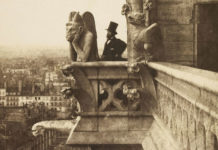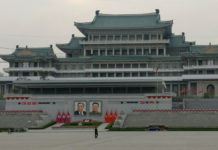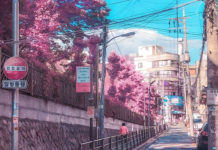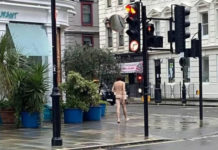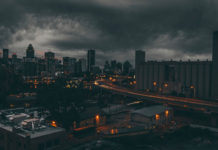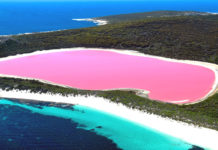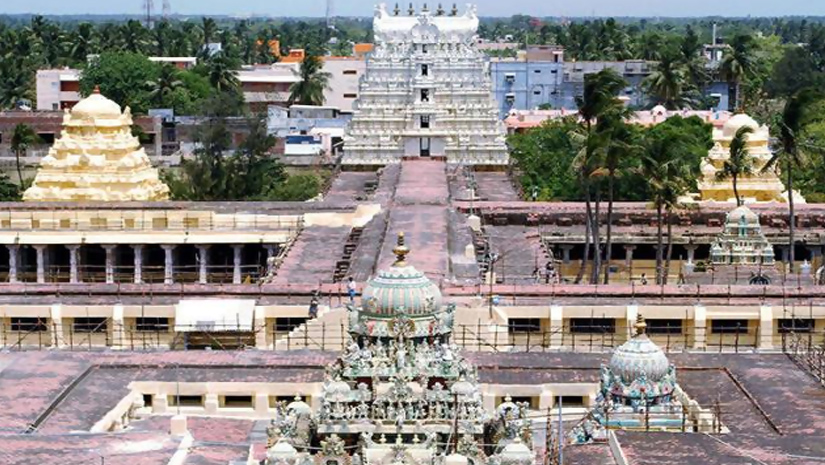Rameshwaram, a town that has Ramanathaswamy Temple, is one of the most revered places in India. Rameshwaram is one of the places that Hindus visit on their journey in ‘Char Dham’; which traditionally starts in Puri, Odisha in the East, then Rameshwaram in the South, Dwarka, Gujarat in the West and Bhadrinath n the North.
The temple of Lord Ramanathaswamy dates back to the period of Ramayana. Rameshwaram is a small town located in the state of Tamil Nadu, India. It is located on an island separated by the mainland by Pamban Channel. Also known as Rameshwaram Island, this pilgrim centre is connected to the mainland by a bridge.
This place has great significance in the Hindu scriptures. It is said that Rama worshipped Lord Shiva here to wash off the sins that he had committed in the war of Ramayana. He wanted a big Shiva Lingam for the purpose but could not get it early. So, Sita built a small one and some say that it is the one kept in the Rameshwaram temple.
According to scriptures, this is also the place from where Rama started building the famous Ram Sethu (floating bridge) to rescue Sita from Lanka.
Floating stones, believed to be a part of the Ram setu were found in the Indian Ocean a few years ago
SundaraKaandam or the fifth canto of the epic Ramayana begins with the ‘Vanar’ minister, Hanuman taking a great leap across the ocean to reach the kingdom of Lanka. On the banks of the River Godavari, at Panchvati, the demon king, Ravana abducted Sita. Rama and his brother met the Vanar King, Sugriva and his escort, Hanuman while on the quest to find Sita. Sugriva had been exiled from his kingdom of Kishkindha by his brother. Rama helped him to regain his kingdom and in return he provided the prince with his army. The army travelled towards Lanka and reached the GandhamadhanaParvatha which is presently found in Rameshwaram.
The search party of monkeys camped near the GandhamadhanaParvatha. After the return of Hanuman from Lanka the party returned to Kishkindha. The party headed towards the eastern coast where Rama performed the ritual and offered his prayers to Navagrahas. The ritual was performed in Devipattinam or Navapaashaanam of the present day.
On his return, Rama offers prayer to the Gods to absolve his sin of killing Ravana, the great grandson of Brahma. The Ramalinga stands in the region where the prince worshiped Lord Shiva.
Rama created a fountain of pure water and took a bath in it to purify himself. This is present as the KodiTheertha in Rameshwaram by the temple. Most of the other Theerthas or purifying baths in Rameshwaram have emerged by the holy touch of the feet of Lord Rama.
DhanushKodi:
The southern tip of Pamban Island in Tamil Nadu, is a ghost town known as Dhanushkodi. The place, just 28 kilometres away from Sri Lanka, is famous for its mythological importance. It is said that Lord Rama and his vanarasena together with his brother Lakshmana, Hanuman and Ravana’s brother Vibhishana, built a bridge using floating stones. This bridge helped them to reach Lanka to rescue Sita from Ravana.
After returning from Lanka, Vibhishana, the new king, asked Rama to destroy the bridge. So, Rama broke the bridge using one end of the bow, giving the place its name – Dhanush meaning bow and Kodi meaning end.
It is believed that there is geological evidence suggesting that this 28-km bridge known as Rama Sethu or Adam’s Bridge once connected the Pamban Island tip to Talaimannar in Mannar Island, Sri Lanka.
The locals in Dhanushkodi claim that the bridge, which was once visible, was completely destroyed following a cyclone in the 15th century then another cyclone that hit the region in 1964, ravaged the region to such an extent that it has remained a ghost town ever since.
The railway link that connected mainland India to Dhanushkodi was destroyed completely and on that fateful day, a daily passenger train known as Boat Mail carrying 115 passengers was washed away as it approached the Dhanushkodi station. The news of this devastation reached the mainland three days later because the area was completely cut off.
And the only vehicle that will take you to the tip of Dhanushkodi is a specially-modified jeep. The first 12-kilometre drive from Rameshwaram to Dhanushkodi is on a normal road with gusts of wind blowing sand on your face. Once you reach the check post, only a modified jeep (4×4) or big vans can go further. The drive from the check post to the devastated region is like a roller coaster ride on the beach. As you go farther you will see the endless deep blue sea on either side of your vehicle. While on one side there is the Indian Ocean, on the other side is the Bay of Bengal. And the difference is completely stark between the two — one side of the sea is calm and blue while the other side sea is green with rough waters. This is because the Indian Ocean is said to have surrendered itself to Lord Rama and hence the once wild ocean is now calm.
In Dhanushkodiremains of structures such as the buildings, railway water tank and others can be seen, making the whole place look like a shell of its former self.
Currently there are only 300 fishermen families staying in the region who make a living by selling shells and other fancy items.
Next to the water tank there is a temple, which has a floating stone kept locked on its premises as a tourist attraction.
The locals will tell you that this is one of the stones used to make the floating bridge which are actually limestone shoals. Near the water tank, you can see the ruins of a church. The locals will also tell you that Dhanushkodi, which was once a city in the Rameshwaram mainland and had all the regular amenities like a post office, school and railway station, is now home to only ruins.
By: Archa Dave


